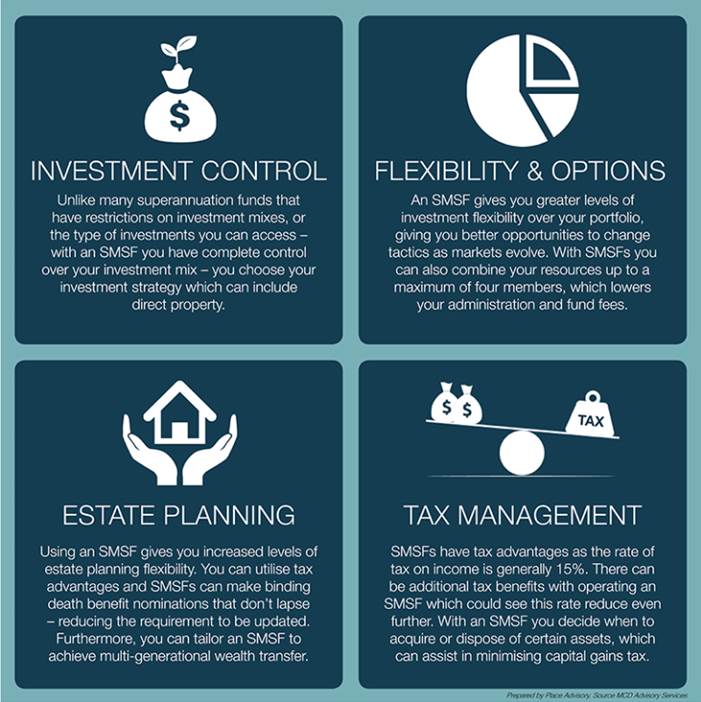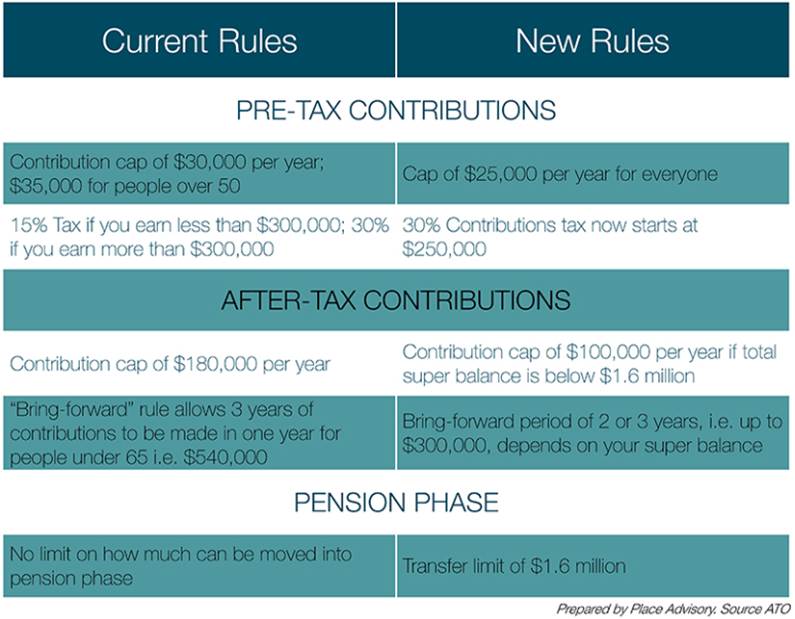Superannuation and investing in Self-Managed Super Funds (SMSFs) are continually in the spotlight and undergoing reviews within the industry, and more so in the political landscape. In the lead up to the May 9 Budget, the Federal Opposition has proposed that SMSFs should be banned from borrowing money. In what they call an attempt to increasing housing affordability, all this does is create more uncertainty.
The Coalition Government has already passed new laws, and on 1 July 2017, the new legislation will come into effect. These new rules, which are the biggest changes to superannuation in 10 years, will have a substantial impact on SMSFs. So where does that leave us? Place Advisory has summarised the benefits of SMSFs and the main changes below.
What is a SMSF?
A SMSF is a superannuation trust structure that is set up for the purpose of providing financial remuneration for its trustees once retirement is reached. SMSFs can have up to four members, who have the control and ability to tailor the fund to suit their needs.
How big are SMSFs in Australia?
In Australia, there are currently 579,579 different superannuation fund types, which hold approximately $2.1 trillion worth of assets. Of these superannuation funds, SMSFs account for 577,236 and have an asset value of $621.7 billion. Statistically, this represents 47% growth in the total asset value in the five years to June 2016.
What are the benefits?

What are the main changes?
Place Advisory has listed the main changes to superannuation in the table below, which come into effect on 1 July 2017.

Originally published: https://www.placeprojects.com.au/self-managed-super-funds-new-rules-affect/
Disclaimer: while due care is taken, the viewpoints expressed by contributors do not necessarily reflect the opinions of Your Investment Property.
